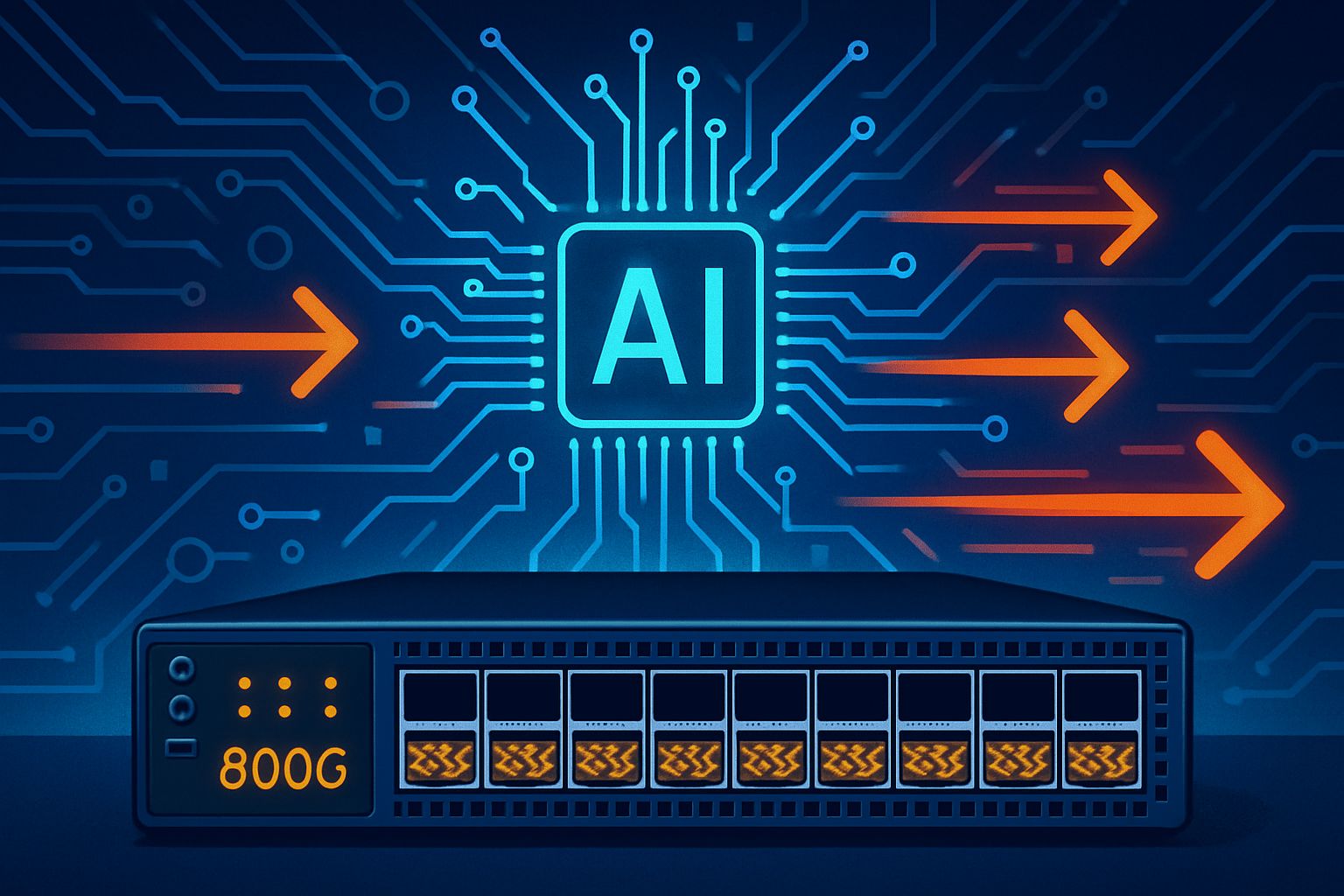
AI CERTS
4 hours ago
Arista pushes 800G for AI datacenter networking growth
Market Momentum Rapidly Accelerates
The 800 GbE segment is expanding at record pace. Crehan Research notes port shipments tripled during Q2 ’25. Moreover, 650 Group expects the Data Center AI Networking market to approach $20 billion next year. These forecasts underscore rising investment in Ethernet AI infrastructure. Meanwhile, vendors compete for budget as hyperscale connectivity becomes mission critical.

Analysts credit large AI clusters for this surge. In contrast, traditional cloud traffic grows more slowly. Seamus Crehan highlights Arista’s branded share leadership in 800 GbE switches. Alan Weckel adds that Ethernet AI infrastructure directly improves job completion times. Consequently, enterprises now study 2026 growth targets with fresh urgency.
Strong analyst enthusiasm sets the stage. However, concrete hardware availability ultimately decides adoption speed. The next section examines what Arista is actually shipping.
Arista Ships Core Platforms
Arista announced the R4 series on 29 October 2025. The company confirmed that 7800R4 modular chassis and two 7280R4 fixed-form switches are shipping now. Additionally, 7020R4 variants and HyperPort linecards will arrive in Q1 2026. Each 7800R4 system supports up to 576 ports of 800 GbE, enabling dense hyperscale connectivity in a single chassis.
The vendor also refreshed its earlier Etherlink leaf designs. These 7060X6 platforms use Broadcom’s Tomahawk5 silicon and deliver 51.2 Tbps throughput. Moreover, they interoperate with the new spine gear under Arista EOS. Consequently, operators can deploy end-to-end 800 GbE fabrics today.
- 7800R4: up to 576×800 G, wirespeed encryption
- 7280R4: 32×800 G fixed spine
- 7060X6: 64×800 G leaf capacity
Magnite already runs a dense 800 G spine based on 7800R4 modules. Nevertheless, real-world volumes remain undisclosed. These shipments reinforce Arista’s AI datacenter networking credibility. Next, we explore the technical subtleties behind these switches.
Technology Specs And Benefits
Every 7800R4 port supports wirespeed TunnelSec encryption. Therefore, customers avoid separate security appliances. HyperPort takes performance further by aggregating lanes into one 3.2 Tbps link. Arista claims this reduces AI job completion time by 44%. However, independent benchmarks are still pending.
Ethernet AI infrastructure benefits extend beyond speed. Higher port density lets architects simplify two-tier leaf-spine topologies. Moreover, fewer switches lower power and cooling costs. Broad ecosystem support—from optics to cables—improves supply flexibility.
Nevertheless, optics remain expensive and hot. Active electrical cables mitigate short-reach costs but sacrifice distance. Consequently, operators must balance watt-per-bit metrics carefully. Professionals can enhance their expertise with the AI Network Security™ certification to master these trade-offs.
Technical advantages are clear. Yet competitive forces shape deployment choices. The following section surveys key players and alliances.
Ecosystem And Competitive Landscape
Arista is not alone. Cisco and Celestica deliver comparable 800 GbE boxes. Additionally, NVIDIA partnership messaging spotlights Spectrum-X switches and BlueField DPUs for AI fabrics. ODM shipments already eclipse many branded vendors in raw port counts.
Broadcom dominates switch silicon with Tomahawk and Jericho families. Meanwhile, optics vendors race to cut module power. Molex promotes active electrical cables as a lower-cost alternative. Consequently, hyperscale connectivity strategies now blend both optics and copper based on rack distance.
Analyst firms remain bullish despite rivalry. Dell’Oro cites double-digit annual growth through 2026 growth targets. Nevertheless, buyer diligence increases as options proliferate. Competitive dynamics influence risk assessments, which leads into the next topic—barriers and mitigation.
Adoption Challenges And Mitigation
Cost tops every checklist. 800 G optics consume notable power and require sophisticated cooling. Furthermore, supply-chain constraints extend lead times for DSPs and substrates. In contrast, passive DACs end at 400 G, limiting their usefulness.
Interoperability remains another hurdle. Early deployments sometimes rely on multi-source agreements rather than finalized IEEE standards. Therefore, qualification cycles lengthen. Additionally, some HPC teams still favor InfiniBand for latency-sensitive workloads.
Operators employ several mitigation tactics:
- Mix active cables and optics to cut near-rack costs.
- Standardize on Ethernet AI infrastructure features like congestion control.
- Stage rollouts to align with 2026 growth targets and supply availability.
These tactics ease near-term risk. However, a clear roadmap remains essential, as the next section explains.
Roadmap Toward 2026 Goals
Arista’s public timeline calls for HyperPort hardware in Q1 2026. Moreover, EOS updates will add job-centric observability via CloudVision UNO. NVIDIA partnership efforts promise verified fabrics spanning DPUs and switches.
Analysts forecast continued double-digit growth. Dell’Oro projects 800 G shipments will outpace 400 G by late 2026. Consequently, buyers embed 2026 growth targets in current capacity models. Procurement teams also negotiate multi-year optics contracts to stabilize pricing.
Meanwhile, standards bodies advance 1.6 T Ethernet work. Vendors already tease early silicon. Nevertheless, 800 G promises the broadest ecosystem through 2026. The industry now watches real deployment metrics to verify projections.
Roadmaps provide direction. Conclusion follows with final insights and actions.
Conclusion And Next Steps
Arista’s shipping 800 G platforms strengthen its AI datacenter networking portfolio. Moreover, exploding port demand, solid analyst data, and early customer wins validate Ethernet AI infrastructure momentum. Challenges around optics cost, standards, and supply persist; nevertheless, mitigation strategies exist.
Therefore, technology leaders should benchmark power, density, and management features now. They should also engage ecosystem partners, including any NVIDIA partnership opportunities, to ensure seamless hyperscale connectivity. Finally, pursue targeted learning; the AI Network Security™ certification equips teams to architect secure, high-bandwidth fabrics. Act today to meet 2026 growth targets without compromise.



